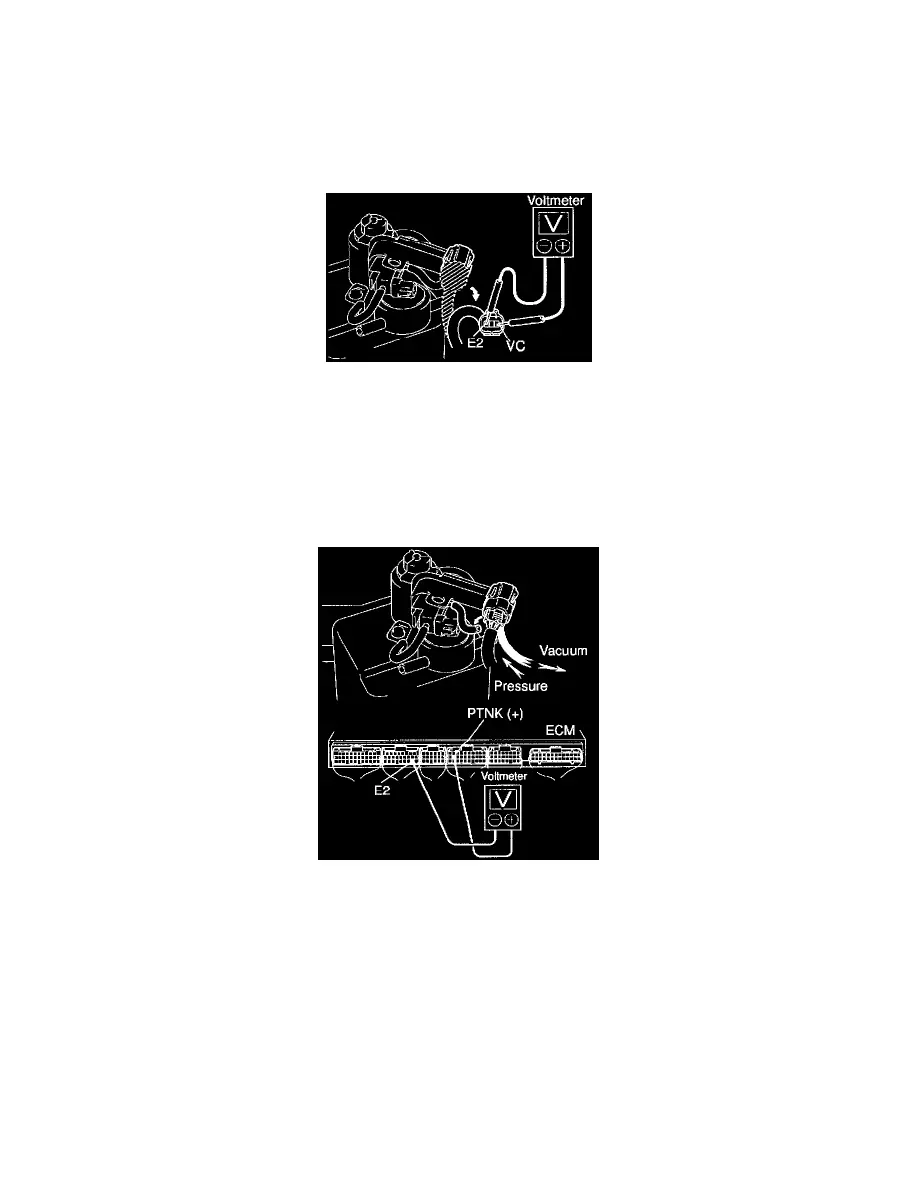Supra L6-2997cc 3.0L DOHC MFI (1998)

Vapor Pressure Sensor: Testing and Inspection
INSPECTION
1. REMOVE NO.2 ENGINE UNDER COVER
2. INSPECT POWER SOURCE VOLTAGE OF VAPOR PRESSURE SENSOR
(a) Disconnect the clamp and vapor pressure sensor connector.
(b) Turn the ignition switch ON.
(c) Using a voltmeter, measure the voltage between connector terminals VC and E2 of the wiring harness side.
Voltage: 4.5 - 5.5 V
(d) Turn the ignition switch OFF.
(e) Reconnect the vapor pressure sensor connector and clamp.
3. INSPECT POWER OUTPUT OF VAPOR PRESSURE SENSOR
(a) Turn the ignition switch ON.
(b) Disconnect the vacuum hose from the vapor pressure sensor.
(c) Connect a voltmeter to terminals PTNK and E2 of the ECM, and measure the output voltage under the following conditions:
-
Apply vacuum (2.0 kPa (15 mmHg, 0.59 in.Hg)) to the vapor pressure sensor.
Voltage: 1.3 - 2.1 V
-
Release the vacuum from the vapor pressure sensor.
Voltage: 3.0 - 3.6 V
-
Apply pressure (1.5 kPa (15 gf/Sq. cm, 0.22 psi)) to the vapor pressure sensor.
Voltage: 4.2 - 4.8 V
(d) Reconnect the vacuum hose to the vapor pressure sensor.
4. REINSTALL NO.2 ENGINE UNDER COVER
